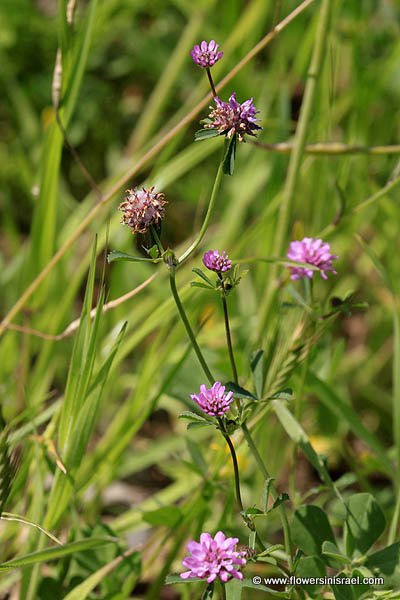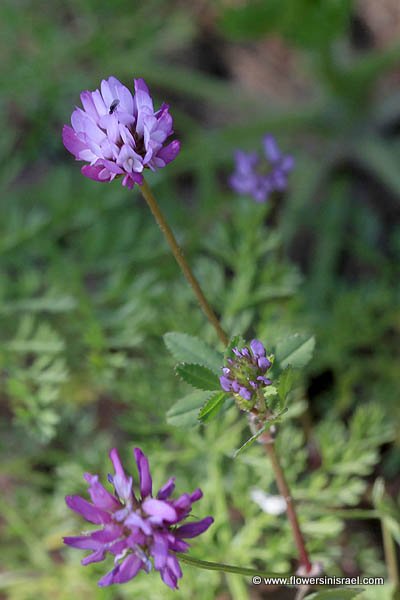Glandular Clover, Gland Clover,
Hebrew: תלתן בלוטי, Arabic: النفل الغدي
| Scientific name: | Trifolium glanduliferum Boiss. | |
| Synonym name: | Trifolium nervulosum Boiss. & Heldr. | |
| Common name: | Glandular Clover, Gland Clover | |
| Hebrew name: | תלתן בלוטי | |
| Arabic name: | النفل الغدي | |
| Plant Family: | Fabaceae / Papilionaceae, פרפרניים |

|
| Life form: | Annual | |
| Stems: | Up to 40 cm tall; erect or semi-erect, extensively branched; stems with glandular hairs | |
| Leaves: | Alternate, compound, trifoliate, dentate; stipule | |
| Flowers: | Hermaphrodite, calyx tube white, corolla pink to mauve, deepening in colour with age | |
| Fruits / pods: | Seed pod with 130–140 oval yellow seeds | |
| Flowering Period: | March, April, May | |
| Habitat: | Batha, Phrygana | |
| Distribution: | Mediterranean Woodlands and Shrublands, Montane vegetation of Mt. Hermon | |
| Chorotype: | Mediterranean | |
| Summer shedding: | Ephemeral |

Derivation of the botanical name: Trifolium, Latin tri, tres, three; folium, leaf; three-leaved. glanduliferum, bearing little glands. nervulosum, with little veins The Hebrew name: תלתן, taltan, clover, trefoil, from tlat (Aramaic) three; the clover is recalled in the Mishnah Kilayim 2:5, "[a field} of clover among which grew up..."

|